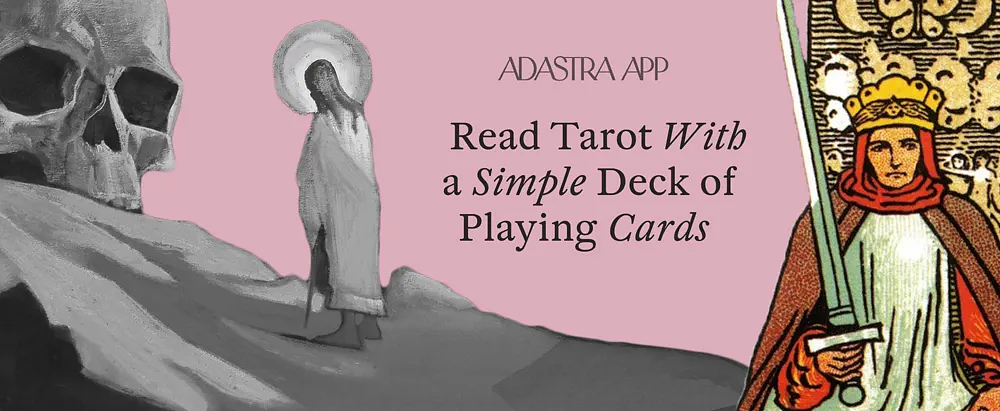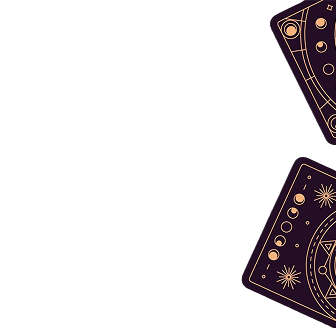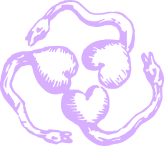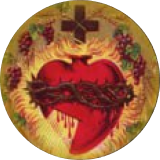How to read Tarot with Playing cards
- Tarot Readings Using Playing Cards: An Overview
- Why use a playing deck of cards to read the Tarot
- Assigning Tarot Meanings to Playing Cards
- Similarities between Playing Cards and the Tarot
- Differences between Playing Cards and the Tarot
- Conclusion

Have you ever wondered if your ordinary deck of playing cards could unlock the secrets of the universe? Surprisingly, this humble pack of cards, often used for games, can be transformed into a powerful tool for divination. In the world of tarot reading, specialized decks with mystical imagery usually take center stage. However, the art of reading tarot cards with playing cards is an age-old practice that remains as intriguing and insightful as its more elaborate counterpart.
In this article, we will explore how to do a tarot card reading with playing cards, unraveling the symbolism hidden within each suit and number. You'll discover that your favorite deck can reveal more than just winning hands; it can provide profound insights into your life's journey. Whether you're a seasoned tarot reader or a curious beginner, learning how to do tarot card readings with playing cards will open new dimensions of understanding and intuition.
Tarot Readings Using Playing Cards: An Overview

Tarot reading with a deck of playing cards, also known as cartomancy, is an amazing practice that transforms a simple deck into a tool for divination. This approach is steeped in history and offers a unique perspective on tarot reading that is both accessible and profound.
This way of reading tarot cards with regular playing cards allows individuals to tap into ancient wisdom using everyday objects. It is believed that fortune telling with playing cards using 36 cards is the simplest and most understandable way to look into the future. You can tell fortunes about love, desire, finances, or ask the cards your question.
In this method, each suit of a standard playing card deck corresponds to one from the tarot. Hearts are linked to Cups, symbolizing emotional depth and relationships. Spades correspond to Swords, representing challenges and intellect. Diamonds align with Pentacles, embodying material concerns and the physical world, while Clubs relate to Wands, associated with creativity and action. The face cards—Kings, Queens, and Jacks—take on roles akin to the court cards in tarot, each rich with character and meaning.
Why use a playing deck of cards to read the Tarot

Accessibility
Using a regular deck of playing cards for Tarot readings brings a unique level of accessibility to the practice. Many people have a deck of playing cards at home, making it easier for beginners to start learning without the need for specialized Tarot decks.
This approach demystifies the art of card reading, allowing more people to explore and benefit from it. Additionally, playing cards are often less expensive and more readily available, making them an ideal starting point for those curious about Tarot.
Safety
There is a sense of safety and comfort in using a familiar object like a deck of playing cards. For some, the imagery on traditional Tarot cards can be overwhelming or intimidating.
Playing cards, however, carry no such connotations and can serve as a gentle introduction to the practice of divination. This familiarity can help readers and querents alike feel more at ease during readings, fostering a more open and receptive environment.
Tradition
The use of playing cards for divination is rooted in tradition. Before the modern Tarot deck was standardized in the 18th century, various forms of cartomancy were practiced using regular playing cards.
This historical connection adds a layer of depth and authenticity to the practice. By using a playing deck, readers can tap into these ancient traditions, connecting with the rich history of cartomancy while still engaging in modern interpretations.
Familiarity
Familiarity with playing cards can enhance the reading experience. Most people are already acquainted with the suits, numbers, and court cards of a standard deck, making it easier to remember and interpret the meanings. This pre-existing knowledge can accelerate the learning process and allow for more intuitive readings.
Moreover, the simplicity of playing cards can strip away some of the complexities and distractions of Tarot, enabling readers to focus on the core messages and themes.
Thus, using a playing deck of cards for Tarot readings opens the door for more people to explore this fascinating practice, providing a gentle introduction while maintaining a connection to the rich history of cartomancy.
Assigning Tarot Meanings to Playing Cards

In classical tarot, the Minor Arcana is segmented into four distinct suits: Cups, Pentacles, Swords, and Wands. Each of these suits embodies its own specific symbolism and energy, which can be readily associated with the suits found in a conventional deck of playing cards.
Hearts (Cups)
Hearts correspond to the suit of Cups, which symbolize emotions, relationships, and the subconscious. When interpreting Hearts in a reading, consider themes of love, compassion, and inner feelings.
- Ace of Hearts: Represents a new emotional beginning, love, or deep personal fulfillment.
- King of Hearts: Signifies emotional maturity, a compassionate and wise leader.
- Queen of Hearts: Reflects intuition, empathy, and nurturing energy.
- Jack of Hearts: Denotes a charming and idealistic individual, often a romantic interest.
Diamonds (Pentacles)
Diamonds align with Pentacles, embodying material wealth, career, and the physical world. These cards speak to our interactions with tangible aspects of life.
- Ace of Diamonds: Indicates new financial opportunities, a fresh start in the material realm.
- King of Diamonds: Represents a successful and authoritative figure in business or finance.
- Queen of Diamonds: Suggests practicality, resourcefulness, and a nurturing approach to wealth.
- Jack of Diamonds: Points to a diligent and ambitious youth, possibly a student or apprentice.
Clubs (Wands)
Clubs correspond to Wands, symbolizing creativity, action, and ambition. They represent the driving force behind our passions and projects.
- Ace of Clubs: The spark of a new idea or project, inspiration.
- King of Clubs: A visionary leader, someone who commands respect and motivates others.
- Queen of Clubs: Reflects charisma, confidence, and creative nurturing.
- Jack of Clubs: Denotes a young person full of energy, ambition, and zest for life.
Spades (Swords)
Spades align with Swords, representing intellect, conflict, and decision-making. These cards delve into the realm of thoughts, challenges, and communication.
- Ace of Spades: Signifies a breakthrough, clarity of thought, or a significant decision.
- King of Spades: Indicates authority, analytical thinking, and strong leadership in intellectual pursuits.
- Queen of Spades: Suggests sharp intellect, perceptiveness, and independent thinking.
- Jack of Spades: Points to a clever and quick-witted individual, often a young person facing challenges.
Interpreting the Joker
The Joker in a playing card deck adds an element of unpredictability, much like The Fool in tarot. The Joker embodies new beginnings, spontaneity, and the potential for boundless possibilities. When it appears in a reading, it suggests taking a leap of faith, embracing the unknown, and trusting in the journey ahead.
Reading the Cards
When performing a tarot card reading with normal playing cards, the spread used can significantly influence the interpretation. Common spreads such as the three-card past-present-future layout or the Celtic Cross can be effectively adapted for playing card readings. Focus on the relationships between the cards, the suits, and the overarching narrative they create.
Example Spread
- Past (Three of Hearts): Represents past experiences of joy and celebration, perhaps a significant relationship.
- Present (Seven of Diamonds): Indicates current focus on financial planning and growth, investments paying off.
- Future (Nine of Spades): Anticipates challenges ahead, requiring careful thought and strategy.
By understanding the correspondences and meanings of playing cards through the lens of tarot, one can delve into a rich tradition of divination and uncover profound insights. Whether using a dedicated tarot deck or a humble set of playing cards, the journey into the mystical and the unknown remains a deeply rewarding experience. So, can you read tarot with playing cards? Absolutely. And for those looking for a bit of spontaneity, trying a random tarot reading with playing cards layout can provide surprising and enlightening results.
Similarities between Playing Cards and the Tarot

The exploration of the connections between playing cards and tarot decks unveils a fascinating tapestry of shared symbolism and historical intersections. Understanding how to do tarot card readings with playing cards can deepen one's appreciation for these connections.
The Four Suits
In both playing cards and tarot, the division into four suits is a fundamental feature. For playing cards, these are Hearts, Diamonds, Clubs, and Spades, each carrying its own cultural and symbolic significance. Tarot, however, presents Cups, Pentacles, Wands, and Swords, with each suit representing elemental forces: water, earth, fire, and air, respectively.
This elemental alignment imbues the tarot with a mystical dimension, suggesting that each card within a suit can reflect deeper emotional, material, creative, or intellectual themes. The parallel structure in playing cards, though primarily used for games, hints at a shared symbolic ancestry, which becomes evident when we read tarot cards with playing cards.
The Court Cards
Both systems include court cards that represent figures of influence and personality. In playing cards, these are the King, Queen, and Jack, while in tarot, they expand to include the Knight and Page. These figures serve as archetypal characters, portraying various aspects of leadership, intuition, and action.
The presence of these court cards in both decks illustrates a universal narrative of human roles and relationships, providing a bridge between the playful and the profound. This connection becomes particularly significant in tarot reading with playing cards, where these archetypes are interpreted through a different lens.
The Minor Arcana
The Minor Arcana of the tarot, consisting of 56 cards, mirrors the structure of a standard deck of 52 playing cards. This section of the tarot is divided into suits with cards ranging from Ace to Ten, followed by the court cards. While playing cards are often associated with leisure, the Minor Arcana offers insights into the daily rhythms of life, addressing common experiences and challenges.
This structural resemblance suggests that playing cards might have evolved alongside tarot, each fulfilling different cultural and social functions. Thus, engaging in tarot readings with regular playing cards can provide a unique perspective on life's patterns and challenges.
In essence, the similarities between playing cards and tarot decks are not merely coincidental but rather indicative of a rich, intertwined history. This shared lineage continues to fascinate, serving as a testament to the enduring power of symbols in human culture. Whether one seeks to understand how to do tarot card reading with playing cards or simply to explore the historical connections, the interplay between these two systems remains a captivating study.
Differences between Playing Cards and the Tarot

Delving into the differences between playing cards and tarot decks can reveal their divergent purpose, structure, and cultural significance, each charting its own distinctive course through history. For those interested in reading tarot cards with playing cards, understanding these differences can help you decide which divination tool to choose.
Objective and Application
Playing cards are predominantly crafted for leisure, with their roots embedded in games of skill and chance. They have become a universal source of amusement, inspiring a plethora of game variations across diverse cultures.
Conversely, tarot cards have been historically linked with divination, introspection, and spiritual guidance. Learning how to give a tarot reading with playing cards can transform this common deck into a profound tool for examining the querent's life journey, offering insights and guidance that transcend mere entertainment.
Structural Variations
A typical deck of playing cards comprises 52 cards, divided into four suits, each containing 13 cards. This straightforward structure is adaptable enough to accommodate a wide array of games. In contrast, a tarot deck consists of 78 cards, split into the Major and Minor Arcana. The Major Arcana, made up of 22 cards, symbolizes significant life events and spiritual lessons, while the Minor Arcana, akin to playing cards, addresses everyday experiences.
The inclusion of the Major Arcana introduces complexity and depth to tarot readings, setting it apart from the simplicity of playing card games. For those learning how to do your own tarot reading with playing cards, understanding this structural difference is crucial.
Symbolism and Visual Representation
Playing cards are typically embellished with clear symbols and numbers, facilitating ease of understanding during play. Their imagery is often minimalistic, prioritizing functionality over symbolism.
Tarot cards, on the other hand, are rich with elaborate imagery and mystical symbols, each card narrating its own story through detailed artwork. The symbolism inherent in tarot cards is crucial to their interpretation, weaving a tapestry of meaning that encourages introspection and personal development. Adapting these symbolic readings to playing cards can add a layer of depth to the practice.
Cultural and Historical Significance
While both playing cards and tarot have origins in ancient societies, their cultural roles have diverged significantly. Playing cards have become a global phenomenon, embraced by nearly every culture for their adaptability to various games.
Tarot, however, has preserved a more mystical and niche status, frequently associated with the occult and esoteric traditions. Its historical journey is marked by periods of secrecy and revival, mirroring humanity's enduring search for meaning beyond the ordinary.
So, although playing cards and tarot decks share a common ancestry, their paths have diverged to occupy distinct roles in human culture. Playing cards provide universal amusement, whereas tarot offers a glimpse into the soul, guiding individuals on their spiritual quests. Whether you are exploring how to do tarot readings with normal playing cards or simply appreciating their historical significance, the study of these decks offers a unique insight into human culture and spirituality.
Conclusion

Learning how to do tarot card readings with playing cards opens up a fascinating realm where everyday objects become powerful tools for divination. This practice not only makes tarot more accessible but also taps into a rich tradition of cartomancy that has been practiced for centuries. By understanding how to read tarot cards with playing cards, you can uncover deep insights and guidance using a deck that’s likely already in your home.
















